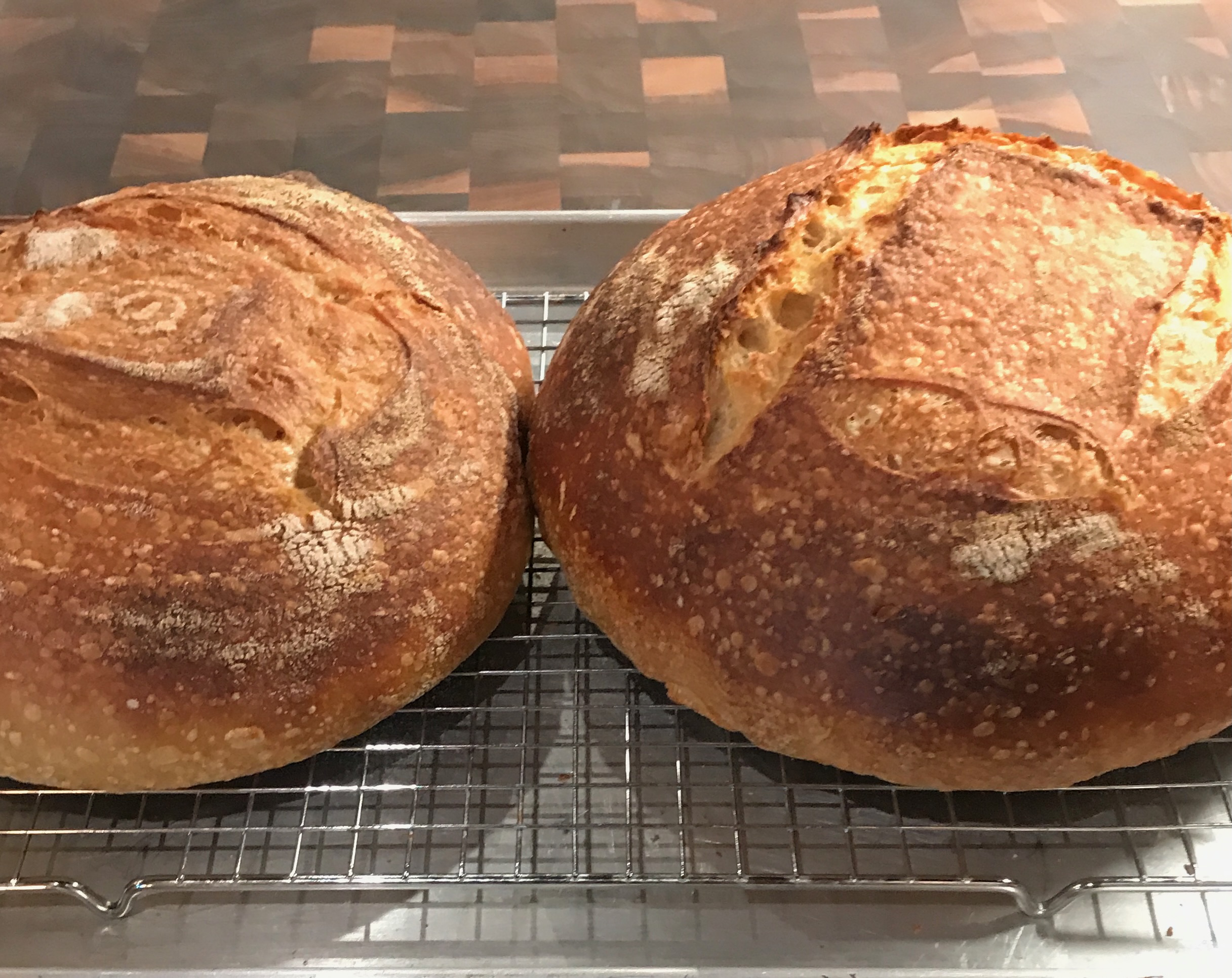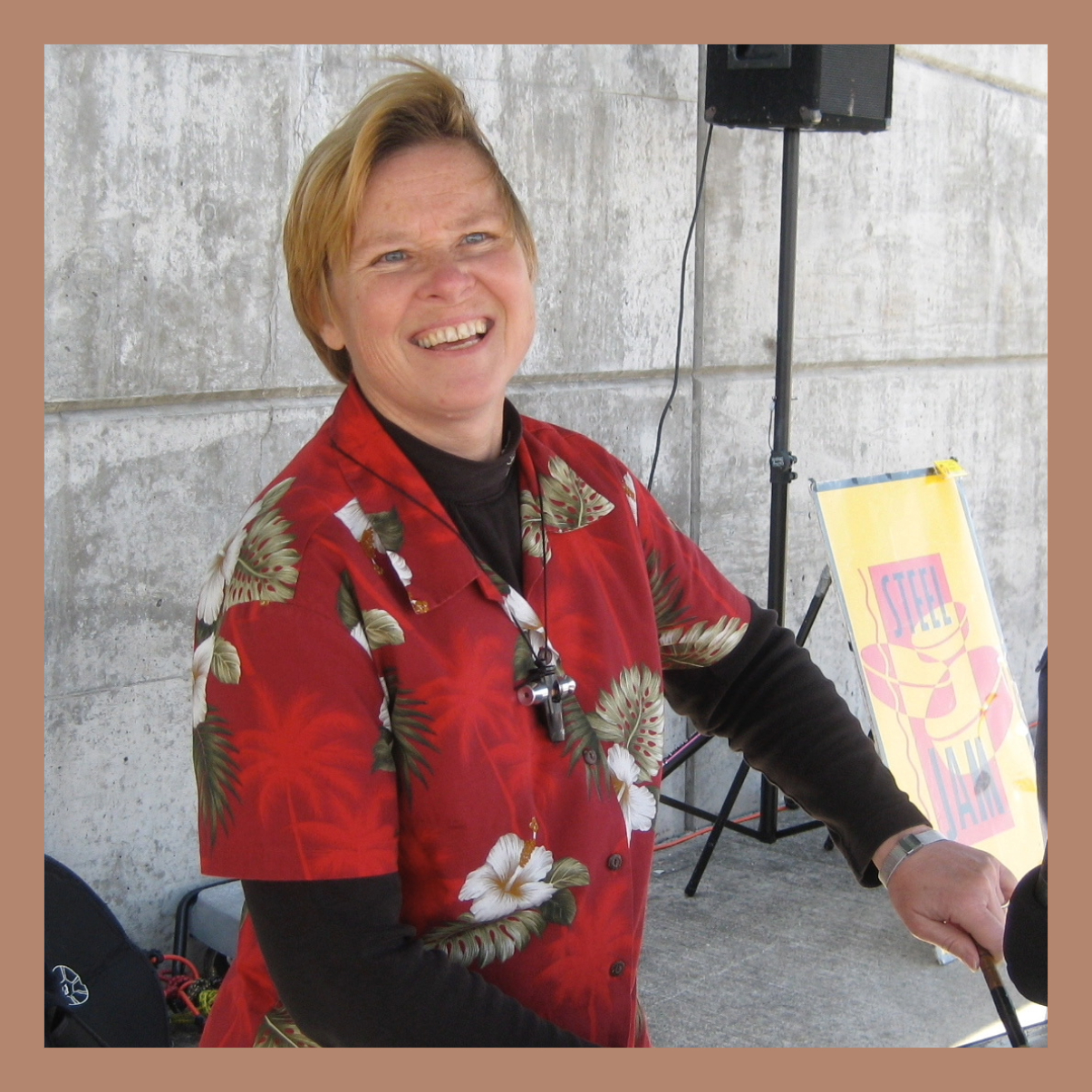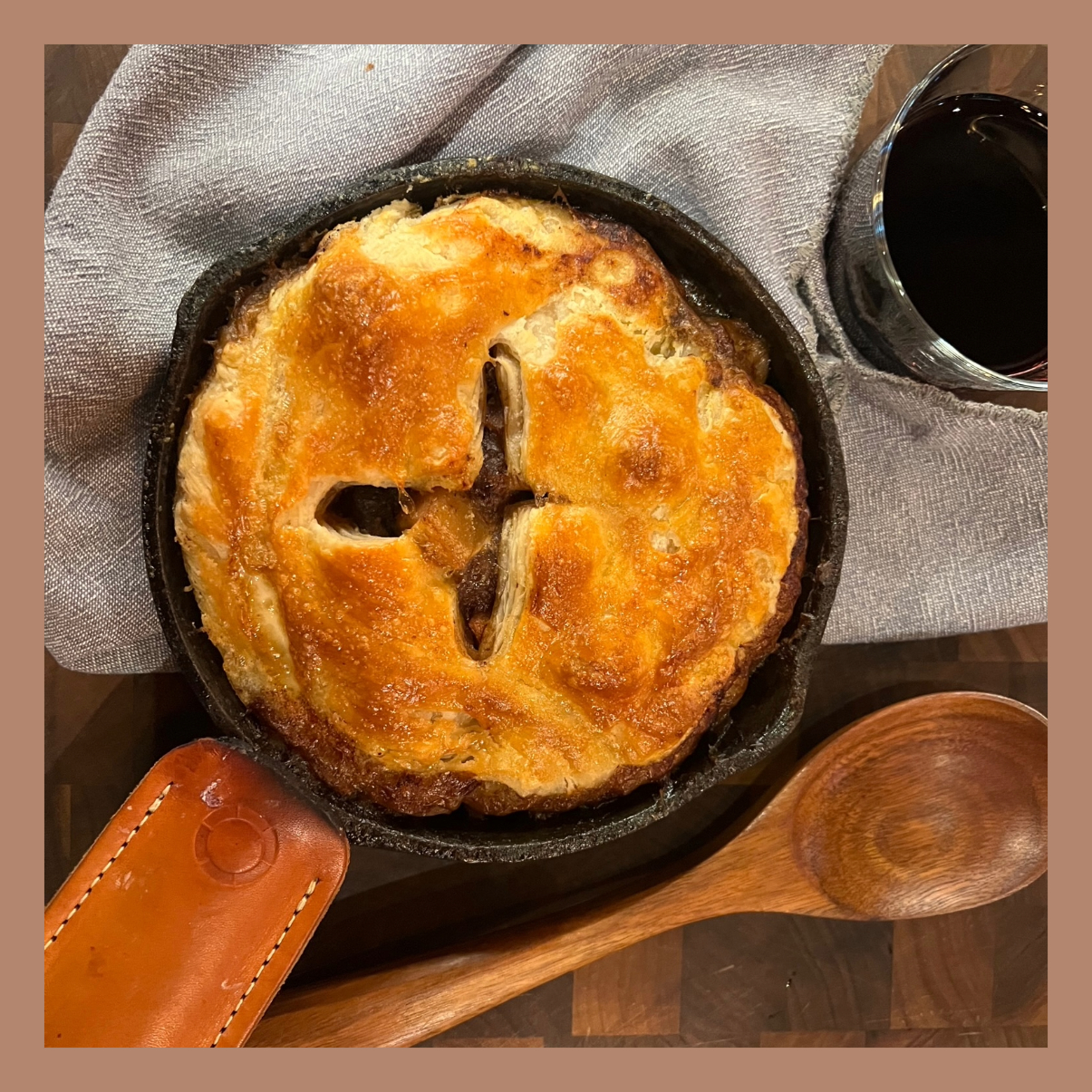September 2023: Issue 33
Hamming it Up Something About Mary Franco-American Alliance
by Joey Wolosz | Published September 5, 2023
A Note from Joey Wolosz
This is your September Field Notes, and by my watch we still have 7 hours of September. God willing, I will get this to your inbox in a few.
Truth be told, I was that college kid that crammed the night before the exam and put off big papers till days before they were due. As an adult, I raced my property tax check to the post office to be hand post-marked the afternoon of April 10. Add those times I sat inches in front of the television in the 70s, my life has been a string of years living dangerously.
Gentle reader, this month is no different. I am in the 11th hour, down to the wire, to get this month’s Field Notes to your inbox before the stroke of midnight and the approaching, encroaching October. However, I will say, I have not compromised the content, maybe just a bit of the formatting.
I’ve mustered the gumption, ingenuity, work-arounds (see my banner above), to keep this ever so readable and interesting.
This past month had us in a Burbank recording studio, with an extended stay in West Hollywood, as well as finding ourselves in the very final stretch of opening The Bungalow.
Harvest is taking her own sweet time. Chardonnay is the only grape we have pulled in thus far.
In this issue I will introduce you to a tastemaker, musician, and talent extraordinaire, Mary Spalding. Her story and our friendship checks both the readable and interesting boxes.
Finally, with autumn finally fallen upon us, I share a Franco-American mash-up recipe that will stick to your ribs and sooth your soul.
If you enjoy this digital romp through the Napa Valley and beyond, make it social and share Field Notes with a friend.
If you’ve found your way here but are not yet subscribed, it is a quick fix. Just click the button below.
Joey Wolosz
Vintner, Cook, Writer Under Pressure

September found us in a Burbank recording studio taping a 90-minute broadcast for Alexander Rodriguez’s On The Rocks, alongside the patron saint of men’s underwear, Andrew Christian, and reality television bartending personality, from MTV’s Lindsay Lohan’s Beach Club, Mike Mulderrig. It was an interesting weave of wine, underwear, West Hollywood, and what your drink order says about your personality.
The Los Angeles coaster continued with thirty minutes before catching our flight home, Jeff realized he lost his wallet. Without proper documentation, we could not make our flight and had another evening in West Hollywood.
NB: With the kindness of strangers, Jeff found his wallet within 20 minutes of cancelling our flight and booking another night in the hotel.
Closer to home, The Bungalow is in the final stretch, we are opening the doors by the end of October. The next few weeks will be a spending spree, filling the space with everything we need to receive guests.

Harvest is moving at her own pace this year, taking her sweet time. As of this writing we have only pulled in Chardonnay.
Usually, we have picked Chardonnay and both Merlot and Pinot Noir by early September. Looks like we are a few weeks behind this year with this miild weather.
Fun note, I did keep aside a few gallons of the Chardonnay juice to make bread with. In April of 2022, Jeff, our friend Stan, and I were at a restaurant in France, in Le Mâconnais, where they had baked bread with levain made from their Chardonnay. I have been in email contact with this restaurant, getting the ratios and quantities, recipes and strategies. Challenge accepted, expect some housemade Chardonnay bread from our kitchen this fall.

She’s With The Band
Long-time friend Mary Spalding is an artistic tastemaker you should know. In 2020 I leaned heavily on my persuasive talents and her musical talents to form a small band you may have heard of, Phat Ankle. An acknowledged musician since the age of five, she erarned a master’s degree in Ethnomusicology. Her post graduate work took here from the classical realm of Western and church music to the world stage of sounds and musical textures. A fellow Polish-American, we share a love of pierogi and the accordion.
Joey Wolosz: What was your initial connection to a world of music, performing, and arranging? How did that grow and evolve?
Mary Spalding: My mom and dad had me start piano lessons when I was five years old, which wasn’t their original intent. Their intent was to provide lessons for my brother, who was six years older. He would go to his piano lessons and come back and struggle and plunk out note after note. I would just get impatient. As soon as he left the piano bench, I would climb onto it and, by ear, started to play what he had been struggling with for 30 minutes or so. So my parents thought maybe the piano lessons should be for Mary. I’ve been playing some sort of instrument for 63 years.
JW: Trinidad and steel drums, how did that come about?
MS: I had been a classically trained pianist and organist studying with a conservatory, Lawrence University, in Appleton, Wisconsin. I did my undergrad there and taught music, played classical music, and church music for many, many years. I went on a safari in Kenya 1981. I was introduced to a lot of different instruments and different music that I had never heard before.
After that Safari, I spent a summer in South Korea, visiting my in-laws at the time. They introduced me to two historical South Korean instruments and customs. It blew my mind, I never knew this music existed. When I got back from that trip, I wanted to know more about music and instruments from around the world. I went back to school to get my master’s degree in ethnomusicology, which is the study of world culture and music. I did that at Wesleyan University in Middletown, Connecticut.
One of the courses that they offered was called Steel Drum Ensemble. I thought I should take this course because I was from Wisconsin and the music was very new to me. That was in 1984. I was part of the Wesleyan University Steel Drum Band. The band had started that year. I was part of it from 1984 to 1986. I just loved it. From that moment on, I have been playing steel drums and have devoted my musical life to playing steel drum music. I even went to the birthplace of the steel drums. The island of Trinidad in the Caribbean, to study and play. I played for carnival and Panorama. Panorama is a huge steel drums celebration where bands from all over the islands of Trinidad and Tobago come to compete to be the best band in the West Indies. There are about 125 members, and they have probably an assortment of at least 300 pans, what we call steel drums. It’s a huge, massive sound, but beautiful, and awesome.
JW: Classical church music and then the jump to Rastafarian, can I say that is correct?
MS: Not Rastafari, that’s more Jamaican. Calypso is a better word.
JW: Calypso, yes. The jump to Calypso and popular Western music is very different from church and Western classical music.
MS: Very different. Yeah, it’s a journey, like no other, I’m sure. From church musician to playing Calypso on steel pan, because that is what you do.
JW: You also do all our pop arrangements for Phat Ankle.
MS: Popular music as well. I found when I first started playing steel drum in the San Francisco area, people absolutely loved it when I would arrange a pop song.. For instance, I arranged ABBA’s Dancing Queen. I can assure you when the band played Dancing Queen, heads would turn. People would say, “I never thought I would hear that on the steel drum,” people just loved it. So I continued doing traditional Calypso, adding salsa and pop music arrangements for our steel drum band.
JW: Other than music, what are some of your creative outlets?
MS: I’ve been pretty focused on music tracks. I have no art ability whatsoever.
JW: To me, music seems a big artistic ability. How about visual art?
MS: Yeah, I have no visual art capabilities. I can draw stick figures, and that’s about it. When I taught music, I would draw things on the chalkboard, like animals or something, for the kindergarteners, and they would just laugh, and I’d be like, “Okay, so I can’t draw,” everybody’s a critic.
I think an outlet for me is reading. I love to read. My favorite categories are science and science fiction. I was reading science fiction when all my friends in grade school were reading Nancy Drew. I’d be like, well, there is Isaac Asimov. You know, and they’d be like, who? Science fiction, to this day, is my relaxing reading of choice. Science fact as well, and history. I love reading.
JW: We were talking about Star Trek and Star Wars yesterday.
MS: Yes. A mutual friend of ours made the mistake of confusing Star Trek with Star Wars, and you just don’t.
JW: No, you don’t do that. So outside of the creative, what do you just have a really good time doing
MS: Lately? Rosé. That is a guilty pleasure. Ah, in the morning, haha, with Gentleman Farmer Rosé in our hot tub, there you go. Aside from that, I’ve discovered that I have time to do more volunteering. Community volunteering. There is still a musical element, I volunteer to play for sing-alongs at assisted living places, and nursing homes. I just love it.
JW: Do you play the steel drum?
MS: Well, actually I’m playing piano, there’s less to lift and there is usually a piano there. I just bring a book of songs.
I love the steel drum, it was a road warrior and a gigging monster for many, many, many years. Over 25 years in the Bay Area. I’ve played Silicon Valley, the likes of Apple and Google. You know, a lot of the tech companies, but there’s a lot of lifting involved. You could call it a heavy metal instrument, the steel drum. I tried to lift less these days.
JW: What other instruments do you play?
MS: I have played a number of instruments. I started with piano when I was five years old. After that I started organ, played guitar, a little fiddle, some banjo, ukulele, and accordion. I’m a jack of all trades. I love to perform, especially with steel drums. You don’t find a lot of sheet music that you can buy for steel drums. So I just started arranging my own for steel pan songs. There wasn’t enough out there. Necessity is the mother of invention. That’s how I began arranging so much steel pan music, it was in order to suit my playing style and my band.
JW: And what’s your band?
MS: I have a couple of different bands. For over 25 years, it was Steel Jam right here in the Bay Area. Steel Jam still performs, though not as much. I kind of passed on the heavy lifting gigs, as there’s a lot of equipment. But now I’m playing in another band. I play steel pan in a band called Phat Ankle with Joey Wolosz [hey, that’s me!] on accordion, Jeff Durham on clarinet, David Shapiro on tenor sax, and Gabi McColgan as our vocalist. Our next gig is atop the Gentleman Farmer float for the Yountville Days Parade on Saturday, October 7 at 11:00 am.
JW: If you want to learn the choreography, get there at 9:30 am. Our wine clube member, Allison Sands, is our choreographer.
MS: Our performance comes with choreography and it’s fantastic.
JW: I know Susan likes to cook. When did you make your first connection to wine and food?
MS: My first connection was moving to San Francisco in 1993, my spouse Susan had not moved out until 1999. I lived at the top of Ashbury Street Hill, please remember I moved there from Wisconsin. It was such a great place. Two blocks down the hill was the famous Ashbury Market at Frederick and Ashbury Streets. It had wonderful food goods. Next to that was the wine shop from Ashbury Market.
It was just this great market. I really knew nothing about wine before moving to San Francisco. The wine people at the Ashbury Market at that time were Walter Wong, Arnold Wong, and Debbie Zachareas. Debbie just gave me such a great education.
At the time, there was a restaurant down the street called Eos that was inspiring.
I’m Polish and grew up on pierogi. Mom was not that good of a cook, and we had to get our pierogi from a market in Menasha, Wisconsin. My introduction to food was San Francisco and meeting all these people who were curious, they really taught me so much about wine and dining.
JW: Friends and family excluded, who are two people who’d like to share a long lingering meal, and what would you serve?
MS: I love fine dining in general, I just can’t cook anything.
Two people come to mind.
One person is because of my interest in both science and history. She is a present-day author in the San Francisco Bay Area. Her name is Annalee Newvitz, and I’ve read her science fiction. She’s also contributed tech articles for the New York Times. She writes science fact and science fiction. I’m just getting into a book of hers called, For Lost Cities, in which she takes an anthropological look at four cities in our various history, over thousands of years ago, and what happened to those cities. [Spoiler Alert, they’re gone.] She does some analysis about that. I’m loving the book, and I would love to have her over to dinner.
What would I serve? Perhaps I would serve muscles in white wine sauce because before moving to San Francisco, we didn’t have that; remember, I was in Wisconsin and in the 50s, 60s, and 70s ,we didn’t even know about muscles. But now that I do, I love them. I would serve muscles and french fries and linger.
The second one, being an organist, is our hero of heroes, JS Bach, the Bach. A German bratwurst and some sort of scallop potatoes or something. Maybe add a beer that we could enjoy together.
JW: What is your spirit animal?
MS: My spirit animal is the pileated woodpecker.
JW: Why is it pileated?
MS: I don’t know what that means. I don’t know what pileated means. It’s the name of the woodpecker. It’s like the largest woodpecker in North America. They sound like a jackhammer, they’re like a foot-and-a-half long. They make holes in trees sometimes so big they can split a tree. They are like no other bird, they will stop you in your tracks. It is a juggernaut on wings, and what’s not to love or respect about that? It was comically used as the template for Woody the Woodpecker. So it has a comical side, but you don’t mess with a pileated woodpecker.
JW: What is your motto?
MS: My motto is, “sure.” That’s my motto. Why is it my motto? I said this throughout my life. Sure. Sure. And then either I hang up the phone, or I close up the email and go, okay, now how am I going to do that? I don’t know. And then that gets the creative juices going, to delve into something that I’ve never done before.

We are officially in Fall. That means autumn leaves, football, stews, braises, and the all-American pot pie. I grew up with Swanson and Banquet frozen pot pies. When I went off to college my dad taught me that the grocery store often had Banquet pot pies on sale for 25¢ each (that’s a quarter of a dollar for the Millennials out there). I could basically eat for a week in my college apartment for less than two bucks.
My tastes may have evolved. Time in the kitchen and in France taught me the pleasure and the complex flavors of a good Bœuf Bourguignon. In this best-of-both-worlds recipe these Franco-American flavors and textures come together. Yes, the twain shall meet.
Searing the short ribs whole and cutting into cubes later allows the Maillard reaction to occur and still keep the meat juicy. I would serve this on a crisp autumn day with our Cabernet Sauvignon or Almanac, our reserve wine.

